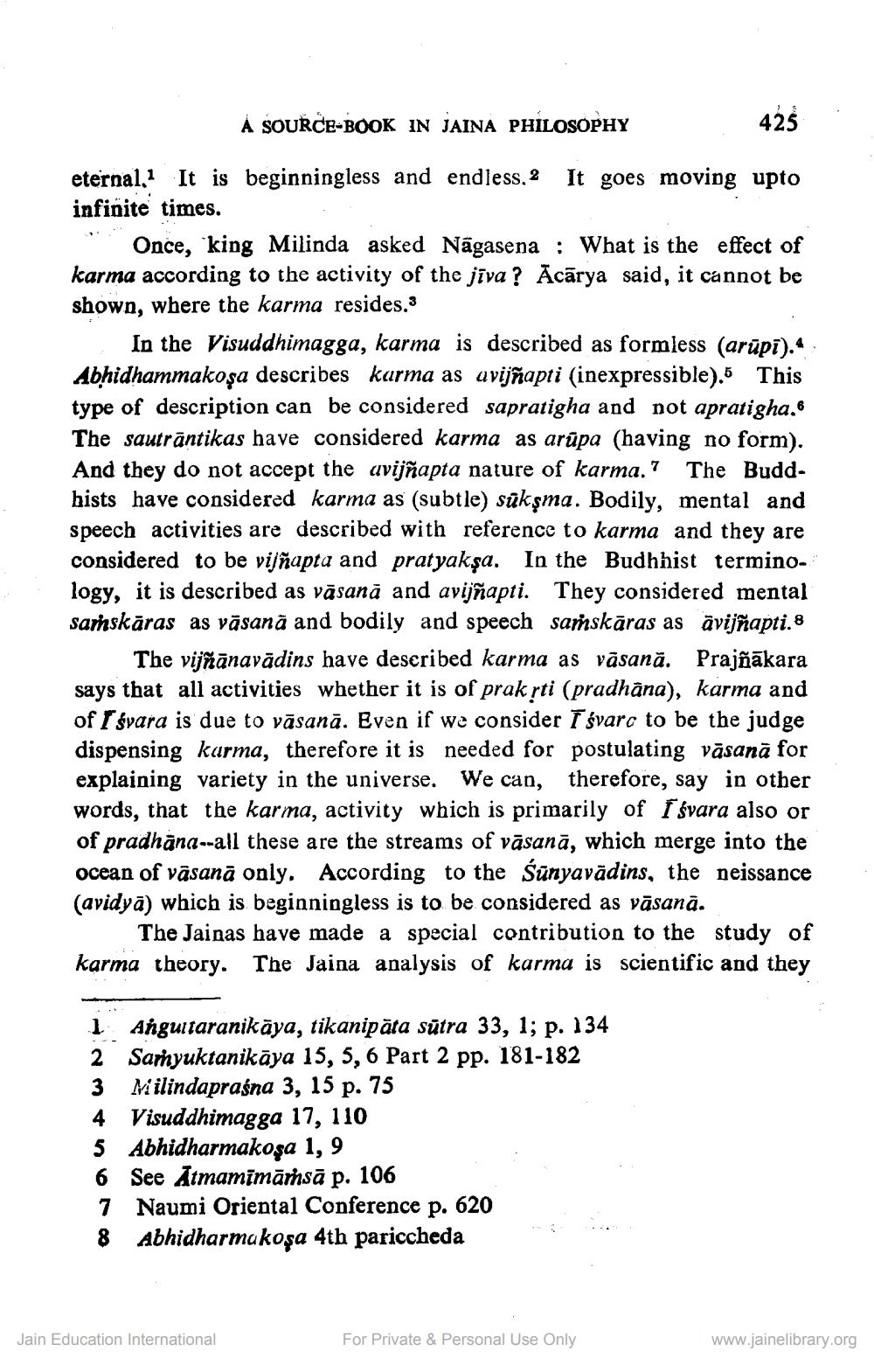________________
A SOURCE-BOOK IN JAINA PHILOSOPHY
425
eternal.1 It is beginningless and endless. 2 It goes moving upto infinite times.
Once, king Milinda asked Nagasena: What is the effect of karma according to the activity of the jiva? Acārya said, it cannot be shown, where the karma resides.3
In the Visuddhimagga, karma is described as formless (arūpī).a · Abhidhammakoşa describes karma as avijñapti (inexpressible).5 This type of description can be considered sapratigha and not apratigha.® The sautrāntikas have considered karma as arūpa (having no form). And they do not accept the avijñapta nature of karma.7 The Buddhists have considered karma as (subtle) sūkşma. Bodily, mental and speech activities are described with reference to karma and they are considered to be vijñapta and pratyakşa. In the Budhhist terminology, it is described as vāsanā and avijñapti. They considered mental saṁskāras as vāsanā and bodily and speech saṁskāras as āvijñapti.8
The vijñānavādins have described karma as vāsanā. Prajñākara says that all activities whether it is of prakṛti (pradhāna), karma and of Isvara is due to vāsanā. Even if we consider Isvare to be the judge dispensing karma, therefore it is needed for postulating vāsanā for explaining variety in the universe. We can, therefore, say in other words, that the karma, activity which is primarily of Isvara also or of pradhana--all these are the streams of vāsanā, which merge into the ocean of vāsanā only. According to the Sunyavādins, the neissance (avidya) which is beginningless is to be considered as vāsanā.
The Jainas have made a special contribution to the study of karma theory. The Jaina analysis of karma is scientific and they
1 Anguitaranikāya, tikanipāta sūtra 33, 1; p. 134
2 Samyuktanikaya 15, 5, 6 Part 2 pp. 181-182
3 Milindaprasna 3, 15 p. 75
4 Visuddhimagga 17, 110
5 Abhidharmakoşa 1, 9
6 See Atmamīmāṁsā p. 106
7 Naumi Oriental Conference p. 620
8 Abhidharmakoşa 4th pariccheda
Jain Education International
For Private & Personal Use Only
www.jainelibrary.org




